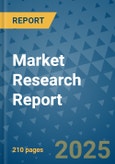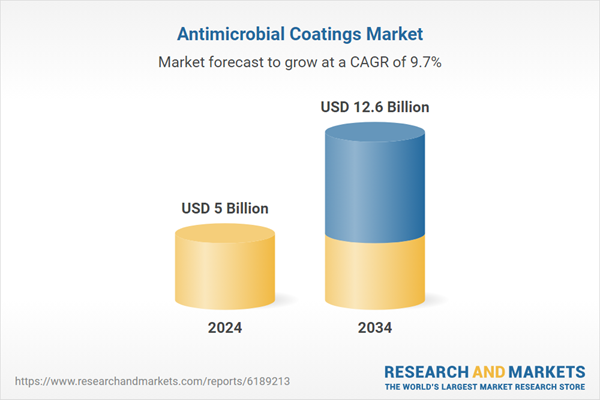The demand is primarily led by silver-based and copper-based coatings, while hybrid systems and quaternary ammonium compound (QAC) formulations are broadening the scope of market applications. Progress in silver ion release efficiency, the emergence of bio-based antimicrobial alternatives, and rising investment in photocatalytic research have accelerated the adoption of smart coating technologies. Regulatory support from agencies such as the EPA and the rapid advancement of precision healthcare have further enhanced market penetration, particularly across medical devices, food packaging, and construction applications. Increasing emphasis on infection prevention and biofilm control has driven the integration of antimicrobial coatings in healthcare environments, resulting in greater scalability and wider industrial acceptance. Growing development in pathogen-specific coating technologies and bioactive material processing continues to optimize performance, expand applicability, and support next-generation precision infection control systems that align with global health and safety standards.
The silver-based coatings segment generated USD 1.2 billion in 2024 and is expected to grow at a CAGR of 8.9% between 2025 and 2034. Continuous advancements in silver ion release technologies and the versatility of silver formulations have positioned this segment as a cornerstone in antimicrobial innovation. The superior pathogen elimination efficiency of silver-based coatings, combined with enhanced formulation stability and production scalability, continues to sustain high demand across clinical and industrial applications. Integration of advanced silver nanoparticle technologies has further improved coating performance, ensuring consistency and reliability across large-scale manufacturing environments.
The multi-modal mechanism segment will grow at a CAGR of 10.4% through 2034, underscoring its pivotal role in advancing clinically targeted antimicrobial solutions. These systems combine multiple active mechanisms that deliver enhanced pathogen resistance and performance compared to traditional single-action coatings. Their superior therapeutic precision and broad-spectrum efficacy make them ideal for applications that demand comprehensive microbial protection. As the market transitions toward multifunctional and value-driven solutions, manufacturers are focusing on differentiating their technologies through precision engineering, performance efficiency, and integration into specialized clinical settings.
United States Antimicrobial Coatings Market reached USD 1.3 billion in 2024. Strong regulatory support for infection prevention programs, a well-established research ecosystem, and the presence of leading industry players have reinforced the country’s leadership position. The North American market continues to grow on the back of strict healthcare safety requirements, EPA-approved product standards, and technological innovation in coating formulations. Procurement frameworks and certification systems shaped by infection control policies have played a vital role in promoting advanced antimicrobial technologies. The rise of personalized healthcare and the continued adoption of precision infection prevention solutions further contribute to long-term market expansion.
Major participants in the Global Antimicrobial Coatings Market include Dow Chemical Company, Sherwin-Williams Company, AkzoNobel N.V., BASF SE, PPG Industries, Lonza Group, RPM International Inc., Axalta Coating Systems, Nippon Paint Holdings, Evonik Industries, Microban International, Hempel A/S, Troy Corporation, Sciessent LLC, Diamond Vogel, DuPont de Nemours, BioCote Limited, Kastus Technologies, and NanoComposix. Leading companies in the antimicrobial coatings industry are pursuing strategic initiatives to reinforce their global competitiveness and expand their market presence. Key players such as AkzoNobel N.V., PPG Industries, and BASF SE are investing significantly in R&D to develop eco-friendly, high-performance coatings tailored to specific applications in healthcare, construction, and packaging. Many firms are emphasizing mergers, partnerships, and long-term collaborations to strengthen regional distribution networks and enhance technological capabilities. The focus on innovation in hybrid and multifunctional coating systems enables better product differentiation.
Comprehensive Market Analysis and Forecast
- Industry trends, key growth drivers, challenges, future opportunities, and regulatory landscape
- Competitive landscape with Porter’s Five Forces and PESTEL analysis
- Market size, segmentation, and regional forecasts
- In-depth company profiles, business strategies, financial insights, and SWOT analysis
This product will be delivered within 2-4 business days.
Table of Contents
Companies Mentioned
The companies profiled in this Antimicrobial Coatings market report include:- AkzoNobel N.V.
- PPG Industries
- Sherwin-Williams Company
- BASF SE
- Nippon Paint Holdings
- Axalta Coating Systems
- RPM International Inc.
- Lonza Group
- 3M Company
- DuPont de Nemours
- Microban International
- Dow Chemical Company
- Evonik Industries
- Hempel A/S
- Diamond Vogel
- Troy Corporation
- Sciessent LLC
- BioCote Limited
- Kastus Technologies
- NanoComposix
Table Information
| Report Attribute | Details |
|---|---|
| No. of Pages | 210 |
| Published | October 2025 |
| Forecast Period | 2024 - 2034 |
| Estimated Market Value ( USD | $ 5 Billion |
| Forecasted Market Value ( USD | $ 12.6 Billion |
| Compound Annual Growth Rate | 9.7% |
| Regions Covered | Global |
| No. of Companies Mentioned | 21 |









